








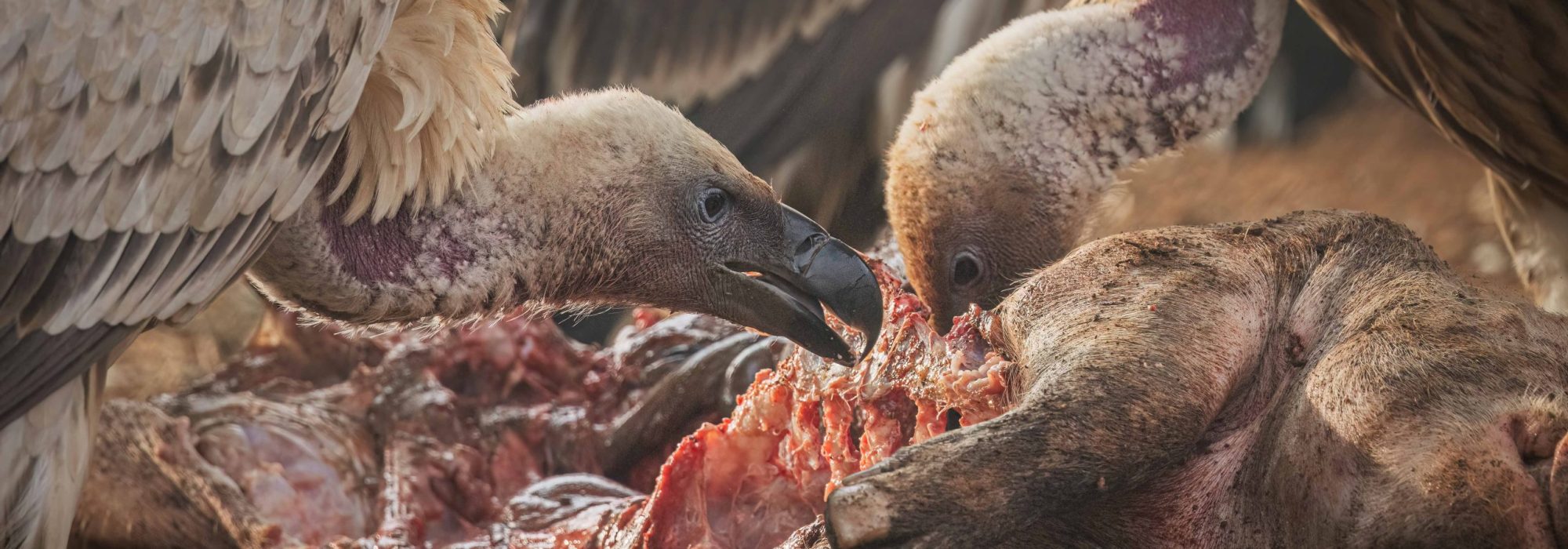









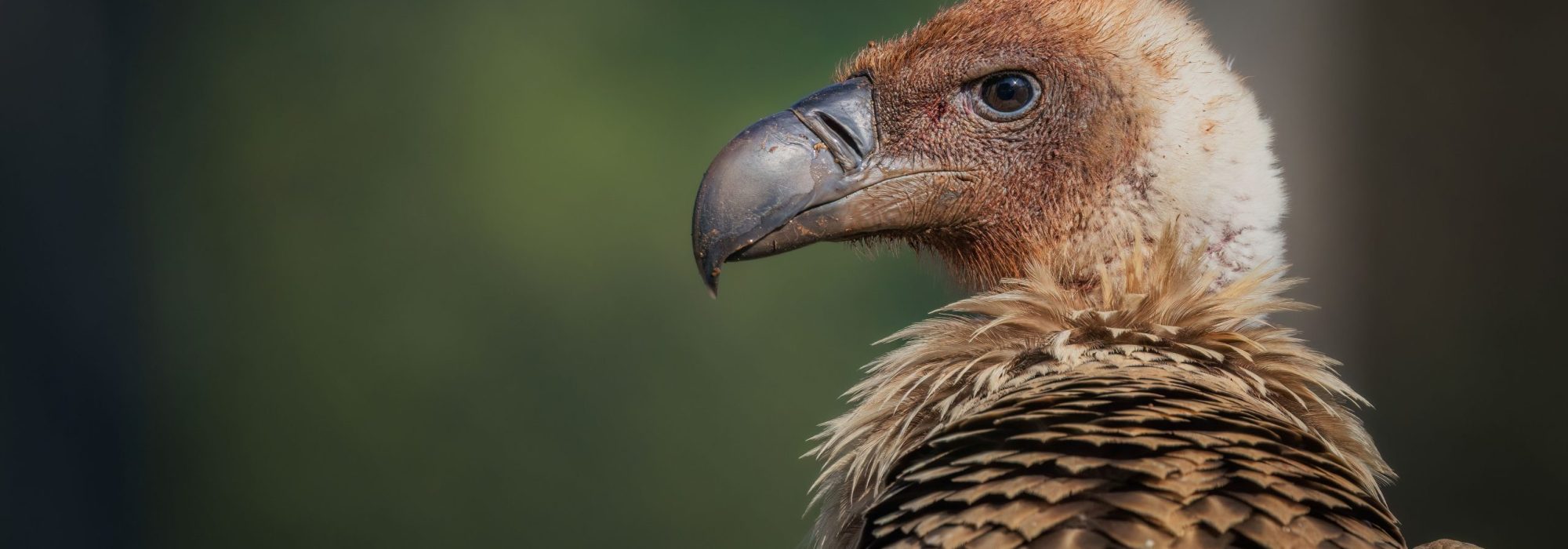
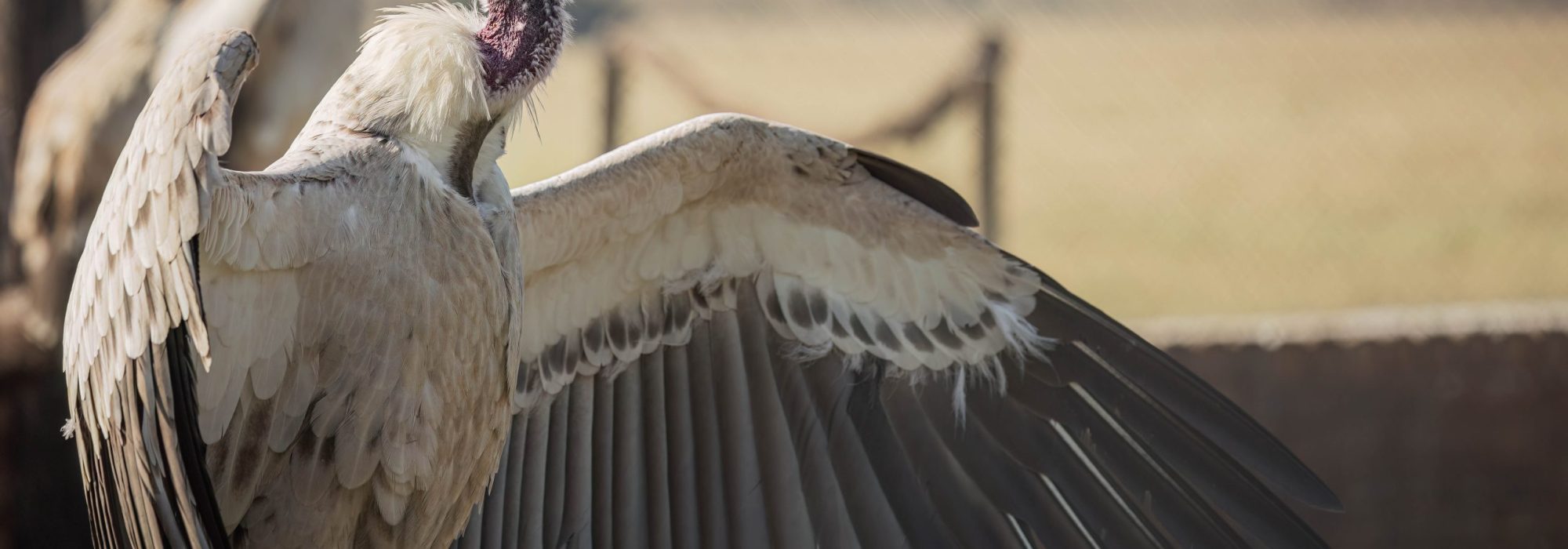



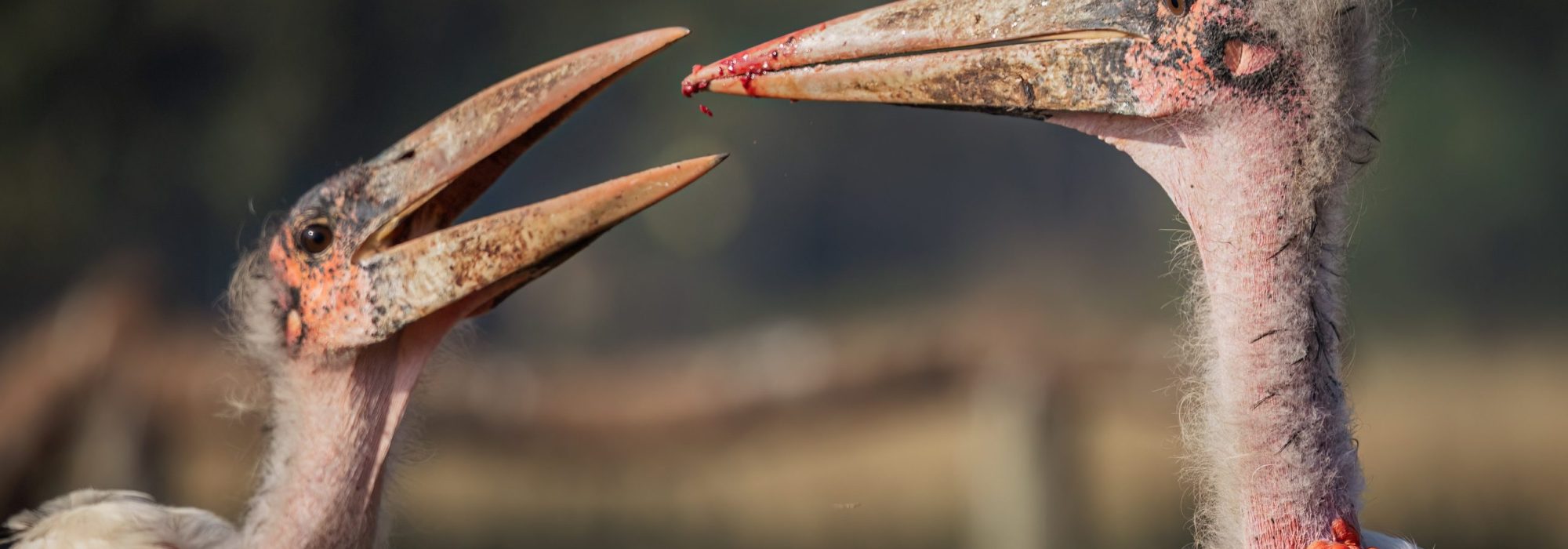







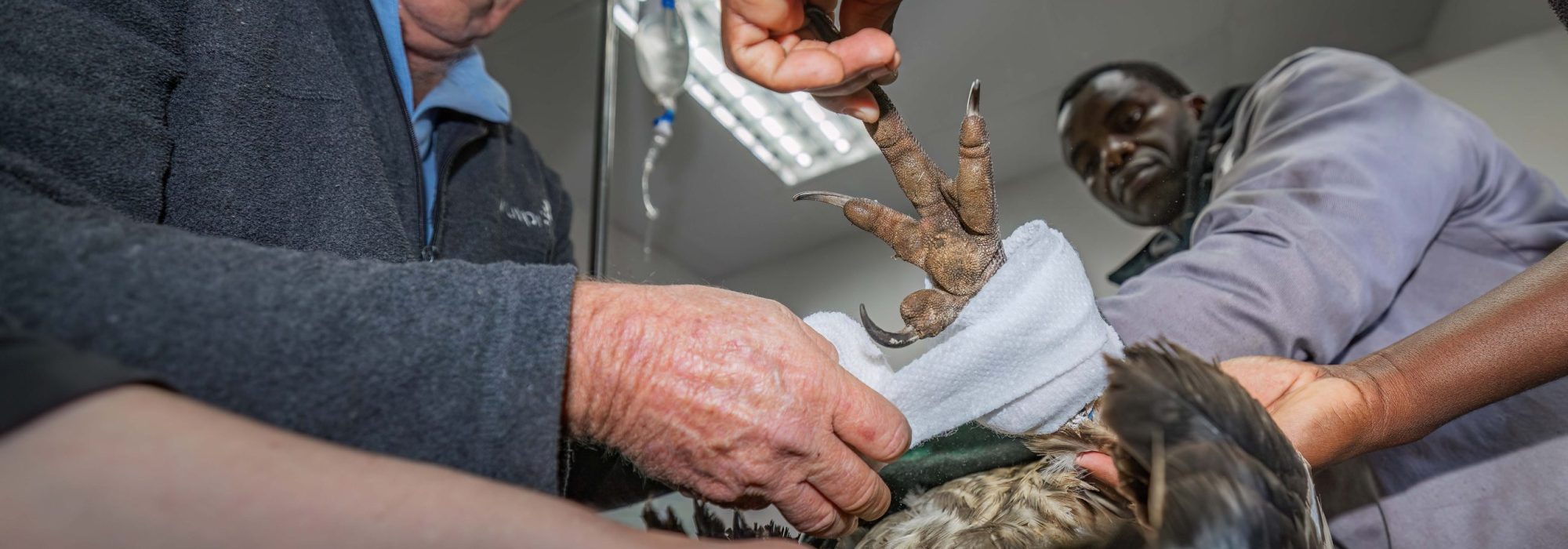
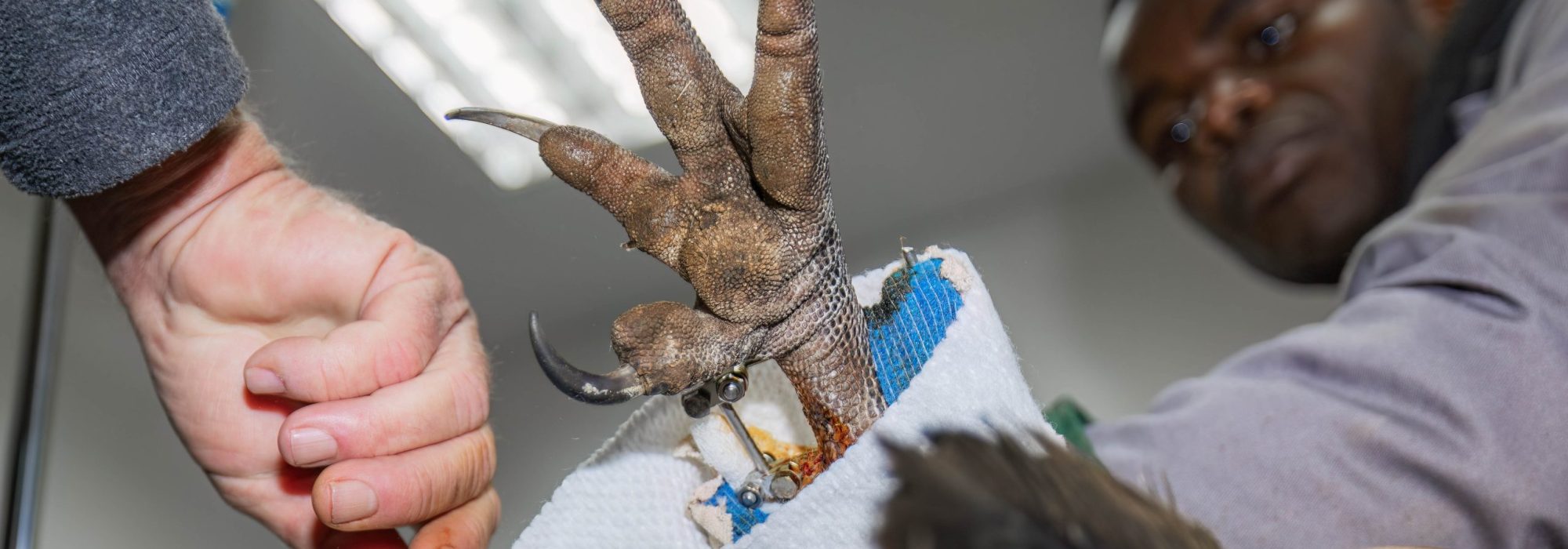






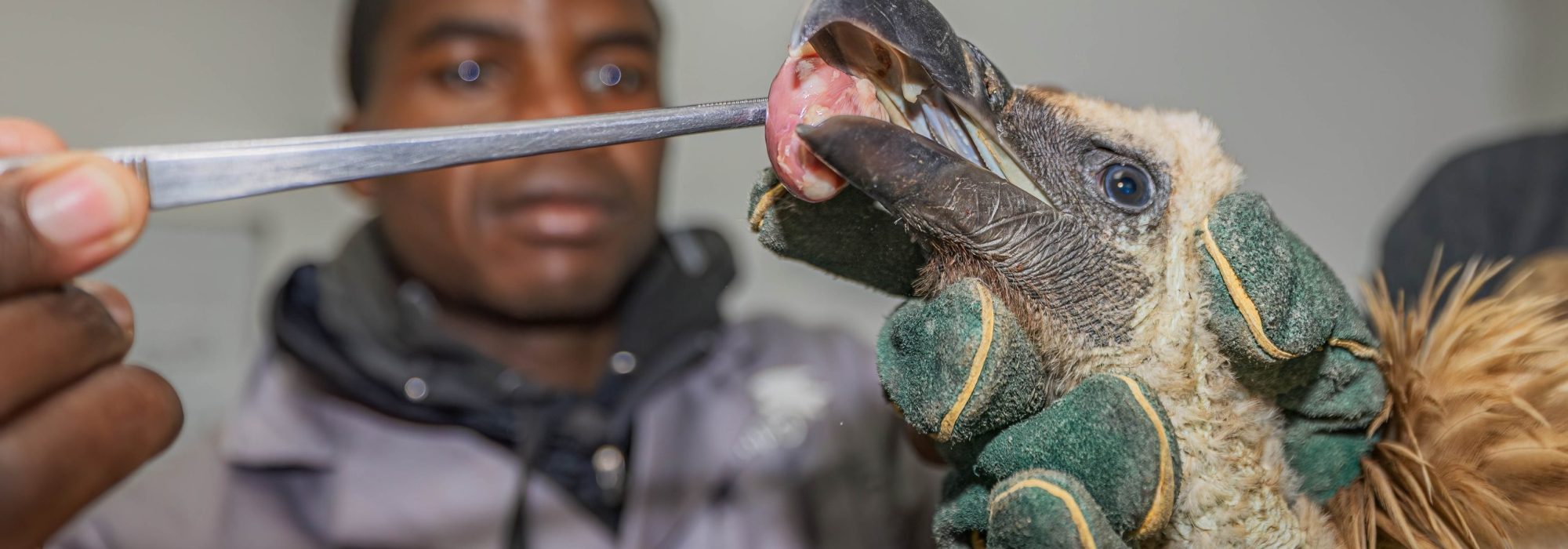














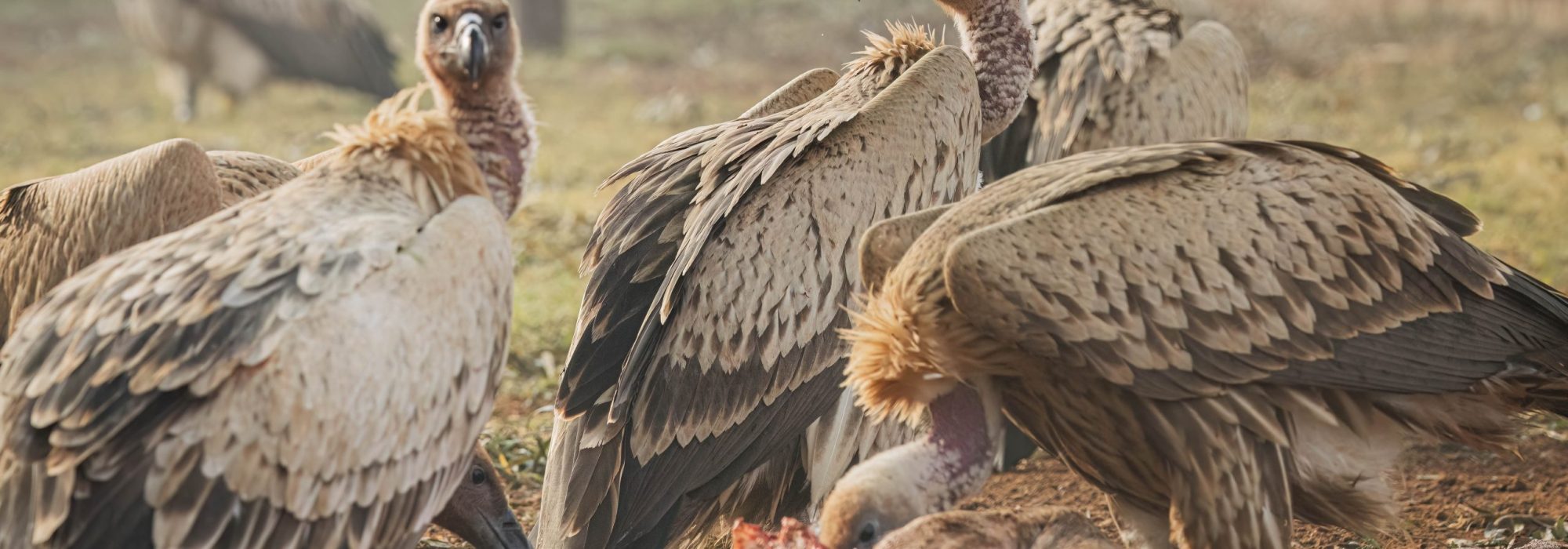

Our Partners & Collaborators
Wild and Free Wildlife Rehab Center
VulPro
Over & Above Africa
WeWild Africa
Coordinated Response Initiated Following Unprecedented Vulture Poisonings and Fatalities in the Lowveld
In a devastating week for vultures, two mass poisoning incidents in South Africa’s Lowveld have left conservationists and wildlife lovers shocked. In Kruger National Park, 123 vultures perished after poachers tainted an elephant carcass with a toxic pesticide to hide their illegal activities. Just a few days later, a second incident in Marloth Park resulted in the death of 102 vultures, including 92 white-backed vultures—almost 90% of which were breeding adults—along with nine hooded vultures and one white-headed vulture. With fewer than 50 breeding pairs of white-headed vultures (Trigonoceps occipitalis) left in South Africa, the loss of any adult is biologically significant. In both instances, the poisoned carcasses (one being an elephant and the other a warthog) were left by the culprits, strongly suggesting that their intention was to eradicate vultures as sentinels—preventing their circling from warning rangers of poaching activities. These consecutive attacks highlight an increasing and targeted threat to the vulture populations of southern Africa.
These events follow a growing and deeply troubling pattern across Africa:
- Botswana (2019): 537 vultures killed after feeding on poisoned elephant carcasses.
- Namibia (2013): Over 500 vultures died from a single poisoned carcass in Bwabwata National Park.
- Zimbabwe (2012): 144 vultures poisoned in Gonarezhou.
- Mozambique (2018): 104 vultures dead in Limpopo National Park.
Tanzania (2015): Over 60 vultures poisoned in Selous just after an anti-poaching sweep.
Poachers deliberately poison carcasses to get rid of vultures, which often circle above as an initial indicator of a kill site. These birds possess remarkable eyesight, and their presence quickly attracts the notice of rangers, aircraft, and drones. The poisons employed—carbofuran, aldicarb, methomyl, and strychnine—are agricultural chemicals known to be deadly in small doses and are frequently sold illegally.
This crisis extends beyond just poaching concealment. In South Africa, vultures are also killed for practices rooted in traditional beliefs (muthi). It is believed that vulture brains possess the ability to enhance clairvoyance, increase luck, or forecast winning lottery numbers. A 2014 study revealed that 29% of South African traditional healers acknowledged utilizing vulture parts, primarily for divination purposes.
The repercussions are severe. Most vultures reach maturity between 4 to 6 years and typically yield one chick annually. A single poisoned carcass can decimate hundreds, threatening the future of an entire breeding colony within hours. Other scavengers, such as lions, jackals, and hyenas, are also affected, along with domestic dogs and livestock. Poison residues may seep into the soil and water, posing risks to rural communities, dogs, and even people who handle carcasses. The rise in feral dog and rat populations, as observed in India following vulture declines, could lead to increased transmission of diseases like rabies, anthrax, or brucellosis. After the decline of vultures in India, the feral dog population surged 30-fold, resulting in over 30,000 rabies-related deaths per year.
Wild and Free Wildlife Rehabilitation Centre, based in Hectorspruit near Malalane, is now leading the charge in emergency vulture rehabilitation across the region. With over 50 years of combined wildlife veterinary experience and a fully equipped on-site clinic, Wild and Free has quietly built one of the most capable rapid-response teams in this part of South Africa.
Over the past three years, the centre has worked closely with VulPro, Africa’s leading vulture conservation NGO, to treat and release vultures injured by poisoning, power lines, and other human threats. This partnership has been formalised and scaled with strategic support from WeWild Africa and Over and Above Africa.
Together, they are establishing a Lowveld-wide response unit. The goal: real-time coordination during poisoning events, professional medical stabilisation in the field, and long-term rehabilitation in purpose-built facilities, prioritising animal welfare and eventual release. This isn’t new work. But now, it’s connected—across provinces, between specialists, and with a unified mission.
To prevent further mass poisoning events, the conservation community is calling for a multi-pronged national response:
- Real-time GPS/GSM monitoring has helped detect mass deaths early in countries like Botswana, Kenya, and Mozambique. In Kenya’s Masai Mara, tagged vultures led rangers to poisoned carcasses within 24 hours, dramatically reducing collateral losses.
- Unusual vulture movement behaviors—like extended stationary phases or sudden mortality clusters—can activate quick-response measures when monitored in real-time. The Peace Parks Foundation has successfully tested this in southern Mozambique.
- Goat herders and landowners in KwaZulu-Natal and Limpopo have already helped contain 14 poisoning incidents by identifying suspicious carcasses early and alerting authorities. This model needs to expand into rural and reserve-adjacent communities in the Lowveld.
- In South Africa, toxic substances like carbofuran and aldicarb remain illegally accessible, even though they are banned in Kenya, Botswana, and most of the EU. It’s essential to strengthen regulation and enforcement in both formal and informal markets.
- In South Asia, designated VSZs (Vulture Safe Zones) surrounding critical nesting colonies—where hazardous substances are prohibited, communities receive education, and roosting trees are safeguarded—have demonstrated quicker population recovery than national parks. A comparable corridor might be created across the Kruger-Marloth-Lionspruit landscape.
- Poisoning should be recognized as a top-tier environmental crime. Enhancements in evidence handling and courtroom prosecution through Namibia’s Wildlife Crime Unit and Kenya’s judicial training programs have led to better conviction rates. South Africa needs to develop similar capabilities to prevent future offenses.
The threat to vultures in 2025 is escalating on multiple fronts. Poaching syndicates are becoming more sophisticated, employing delayed-action poisons, distributing toxic baits across wider areas, and increasingly targeting breeding colonies. High-density roosting sites are especially vulnerable during the nesting season, when adult birds are less mobile and more concentrated. Recovery is painfully slow—most vultures breed just once a year, and even modest annual losses of breeding pairs can lead to long-term population collapse. Meanwhile, the belief-based trade in vulture parts continues largely unchecked in urban muthi markets across Durban, Johannesburg, and Maputo, driving a clandestine but persistent demand that further pressures already declining populations.
Historic interventions have shown clear impact in addressing vulture declines. In India, banning the veterinary drug diclofenac led to a measurable reversal in population collapse among Gyps species. In Kenya, dedicated wildlife poisoning response protocols have resulted in successful convictions and faster containment of poisoning events. In South Africa’s Limpopo province, pilot programs involving ranger-community partnerships have reduced predator poisoning incidents in targeted districts. These outcomes demonstrate that coordinated, well-resourced interventions can be effective. Vultures play a critical ecological role in nutrient cycling, carcass removal, and disease suppression. Their decline has cascading impacts on ecosystem function and human health. Sustained support for the Lowveld Vulture Response Unit is essential to prevent further population loss and to maintain the stability of scavenger guilds in southern Africa.
-
Wiki West
- June 3, 2025

